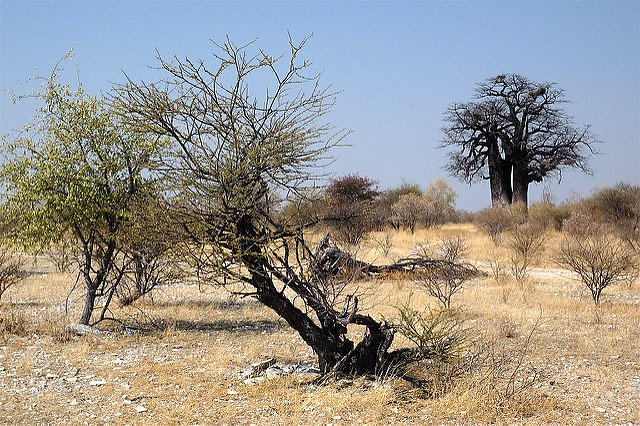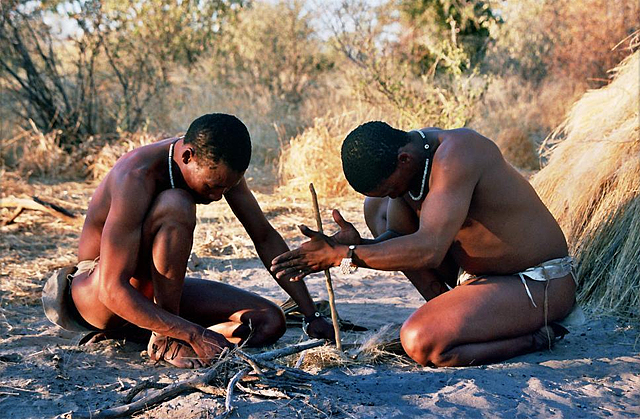The drought that has plagued Namibia for the past few years has made the Nyae Nyae Conservancy especially dry, which has promoted many more harmful bush fires than normal. The fires have even destroyed desert vegetation that has survived the drought. But the good news, reported in a newspaper last week, is that the Ju/’hoansi and their land managers are steadily reducing the numbers of unwanted wildfires through careful range management.

The statistics the reporter cited are heartening: 50 percent of the Conservancy lands burned in 2012, causing extensive damage to the vegetation as well as some loss of human and animal life. However, in 2014 the damage was less: 22 percent of the Conservancy burned. But the numbers have kept improving, to 12 percent in 2015 and 11 percent in 2016. Lara Diez, coordinator of the Nyae Nyae Development Foundation, expressed justifiable pleasure in this 70 percent reduction over the course of just five years.
Ms. Diez also indicated that the bush fires have been occurring earlier each year, when they are not as hot and thus do not do as much damage. The peak of the season for hot fires in southern Africa occurs in September and October each year. Diez told the newspaper, “This 70 percent reduction demonstrates that by working in unison, the partners and the local community at Nyae Nyae and their interventions have actively reduced the fuel load.”
The management strategy the Conservancy uses with the Ju/’hoansi farmers is to actively burn patches of rangelands where fuel loads are high early in the year, particularly at places where the fires would threaten villages or important resources. This strategy of reducing fuel loads has allowed fires to be controlled better and has reduced the number of later, more destructive, fires. Raising awareness among the villagers of these management approaches has been important to Nyae Nyae Conservancy officials.
During this coming season the Conservancy will encourage the burning of larger patches of rangelands, again in mid-season. The input and support from the local villages will be essential for this strategy to work, Diez explained. The major goal for 2017, she said, will be to protect the villages and their farming and grazing resources. Diez indicated that this new management approach fits in well with the Ju/’hoansi cultural tradition of selectively burning the desert lands during May through July, the cooler months in southern Africa.

A perceptive article by Hitchcock et al. (1996) went into detail about Ju/’hoansi land and resource management strategies in northwestern Botswana. The authors made it clear that controlled burns have been an important management strategy used by the people to manipulate the resources they need from the desert.
Their informants told them that the burning was done in part to increase the diversity of food plants. The people also burned to reduce the numbers of bushes which hamper the growth of grasses used by their livestock. Furthermore, they burned to reduce the numbers of snakes, ticks, and other species they wanted to control. The Ju/’hoansi also wished to protect some plant species that they used. It sounds from the news story last week as if long-standing values of respect for the land and the wise use of natural resources persist among the people of the Nyae Nyae Conservancy.